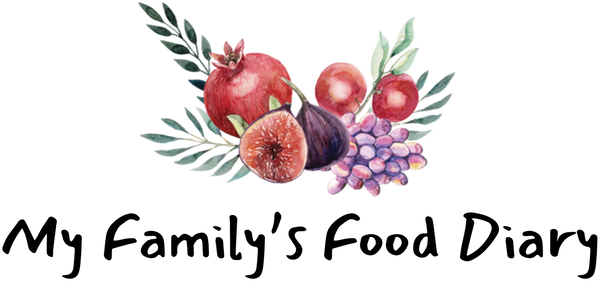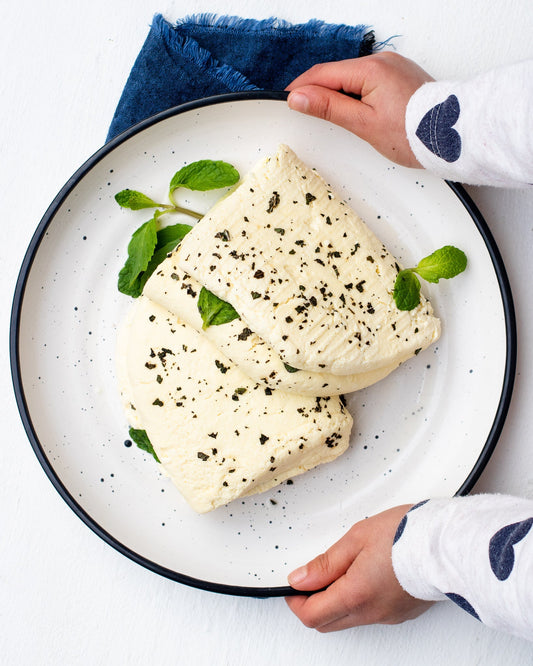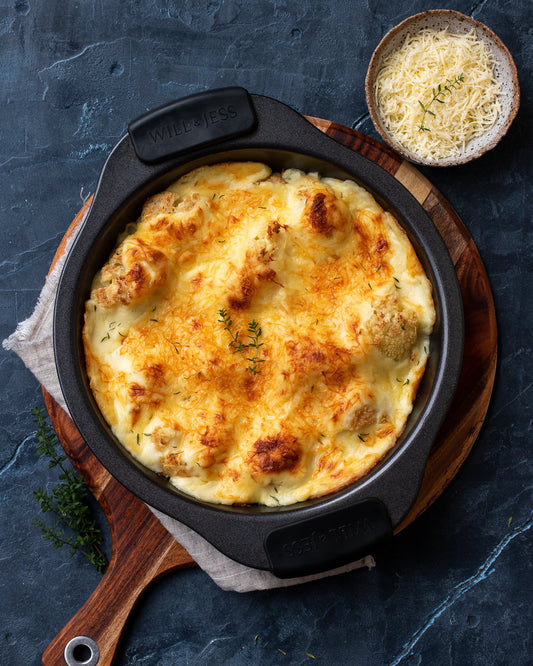Halloumopita – Cypriot halloumi cake

Halloumopita is one of the typical savoury cakes you’ll find in Cypriot grandmother’s houses and my late grandmother was no exception to that. I’m saddened I didn’t get to record her original recipe but I remember fragments of her making it in the kitchen and so this recipe is a tribute to her. It is referred to as a cake due to the fact that it is usually baked in a bundt tin but this is savoury, just like my Cypriot olive cake.
Halloumi – origins and culinary use
Halloumi, a semi-hard cheese with a unique texture and flavour, has its roots in Cyprus, where it has been produced for centuries. Traditionally made from a mixture of sheep's and goat's milk, halloumi is known for its high melting point, making it an ideal choice for grilling or frying. This characteristic allows it to retain its shape while developing a deliciously crispy exterior.
Halloumi has recently gained significant attention in Europe due to its Protected Designation of Origin (PDO) status. This designation, granted by the European Union, ensures that only cheese produced in specific regions of Cyprus and made according to traditional methods can be labelled as halloumi. This not only protects the authenticity of the product but also supports local farmers and preserves the cultural heritage associated with this unique cheese.
In culinary applications, halloumi shines in a variety of recipes. Grilled halloumi is a popular dish, often served alongside fresh vegetables or in salads, adding a savoury depth to any meal. It can also be sliced and incorporated into sandwiches or wraps, providing a satisfying protein boost. For a delightful appetizer, try marinating halloumi in olive oil, herbs, and spices before grilling or baking it.
Beyond its versatility in savoury dishes, halloumi can also be used in desserts. Pairing it with fruits like watermelon or figs creates a delightful contrast of flavours. As global interest in Mediterranean cuisine grows, halloumi continues to gain popularity, making it a staple in kitchens around the world. Whether enjoyed on its own or as part of a larger dish, halloumi is a cheese that truly elevates any culinary experience.

Ricotta cheese
Ricotta cheese, with its creamy texture and mild flavour, is an excellent ingredient for enhancing savoury baked goods. Its unique properties make it a popular choice in recipes ranging from savoury muffins and breads to quiches and casseroles. One of the primary benefits of incorporating ricotta into these dishes is its ability to add moisture, resulting in a tender crumb that elevates the overall texture.
When used in baked goods, ricotta contributes to a light and fluffy consistency, making it an ideal substitute for heavier ingredients like cream or butter. This not only helps to reduce the overall fat content but also allows for a more balanced flavour profile. The moisture retained by ricotta ensures that baked items remain fresh and enjoyable for longer periods.


Dry and fresh mint
This recipe features a combination of halloumi and mint, a Cypriot classic. Fresh mint leaves are vibrant and fragrant, making them a popular choice in many cuisines. Their bright green colour and crisp texture add not only flavour but also visual appeal to dishes. Dried mint, on the other hand, offers a more concentrated flavour. The drying process intensifies the herb's flavour, making it a staple in all Cypriot pantries.
For more pastries and baked goods check out this link.





1 comment
Is the ricotta in the recipe fresh or dry?
Is the halloumi from brine or fresh?